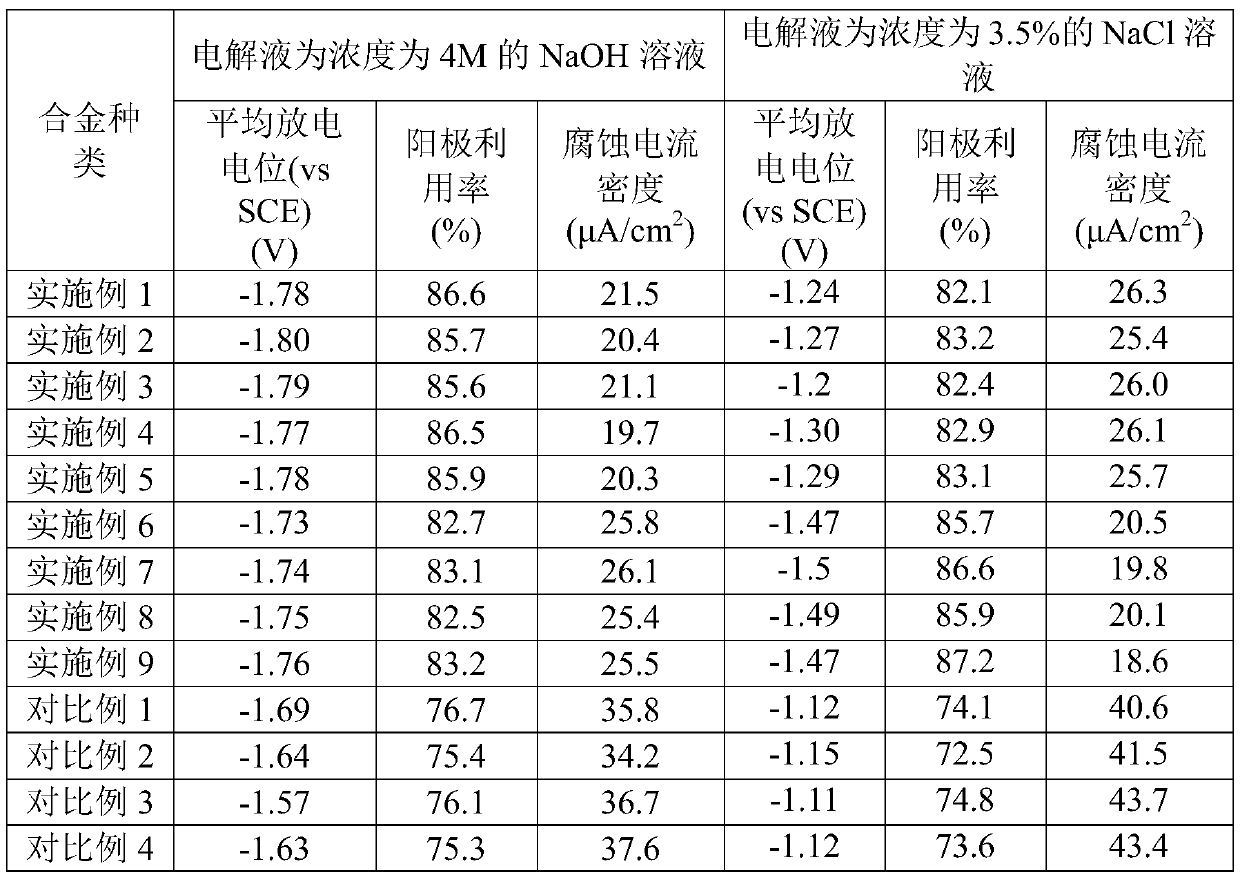Anode alloy material, preparation method thereof, anode for aluminum-air battery and aluminum-air battery
An aluminum-air battery and anode alloy technology, which is applied to fuel cell type half cells and secondary battery type half cells, battery electrodes, circuits, etc., can solve problems such as poor anode utilization, and achieve long service life, The effect of suppressing hydrogen evolution reaction and negative discharge potential
- Summary
- Abstract
- Description
- Claims
- Application Information
AI Technical Summary
Problems solved by technology
Method used
Image
Examples
preparation example Construction
[0041] In addition, the present application also provides a method for preparing the above-mentioned anode alloy material, which includes melting and casting components of the above-mentioned anode alloy material into a billet, and performing annealing treatment on the billet. Specifically, it includes the following steps:
[0042] S1, smelting.
[0043] First melt the aluminum ingot, then add alloy elements Mg, Sn, Ce, B and Ti, add refining agent, refine and stand for 30 minutes, then pour to make a billet.
[0044] Specifically, the aluminum ingot is first melted and heated to 700-800°C, kept for 10-40min, then Mg, Sn, Ce, B and Ti are added, Mg and Sn are added in the form of pure metal; Ce is added in the form of Al-Ce master alloy The form is added; B and Ti are added in the form of Al-Ti-B master alloy. Subsequently, continue to heat up to 720-820°C and keep it warm for 30-60min, and then pour at 710-810°C to make a cast slab.
[0045] When the alloying elements in t...
Embodiment 1
[0052] This embodiment provides an anode alloy material, the composition of which includes: 4.2% Mg, 1.3% Sn, 0.8% Ce, 0.0007% B, 1.1% Ti, and the rest is Al.
[0053] Its preparation method includes:
[0054] In the smelting furnace, 99.99% pure aluminum ingots are first melted and heated to 770°C, kept for 25 minutes, and then pure Mg, pure Sn and Al-Ce, Al-Ti-B master alloys are successively added according to the composition requirements. After adding alloying elements, the alloy melt is heated to 780°C and held for 50 minutes. After refining and standing, it is poured to make a billet, and the pouring temperature is 750°C.
[0055] Carry out homogenization annealing on the slab, and raise the temperature to the homogenization annealing temperature of 480°C at a heating rate of 20°C / min and keep it for 19h; after removing the oxide layer on the surface of the ingot, roll the slab to 2.0mm, and then perform heat treatment and annealing at a temperature of 20 The heating ra...
Embodiment 2-3
[0057] Embodiment 2-3 is substantially the same as embodiment 1, the difference is that the mass percentages of its components are different:
PUM
 Login to View More
Login to View More Abstract
Description
Claims
Application Information
 Login to View More
Login to View More - R&D
- Intellectual Property
- Life Sciences
- Materials
- Tech Scout
- Unparalleled Data Quality
- Higher Quality Content
- 60% Fewer Hallucinations
Browse by: Latest US Patents, China's latest patents, Technical Efficacy Thesaurus, Application Domain, Technology Topic, Popular Technical Reports.
© 2025 PatSnap. All rights reserved.Legal|Privacy policy|Modern Slavery Act Transparency Statement|Sitemap|About US| Contact US: help@patsnap.com

